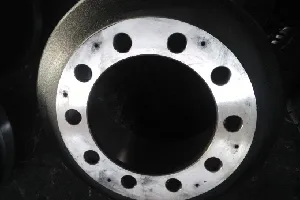
-
 Afrikaans
Afrikaans -
 Albanian
Albanian -
 Amharic
Amharic -
 Arabic
Arabic -
 Armenian
Armenian -
 Azerbaijani
Azerbaijani -
 Basque
Basque -
 Belarusian
Belarusian -
 Bengali
Bengali -
 Bosnian
Bosnian -
 Bulgarian
Bulgarian -
 Catalan
Catalan -
 Cebuano
Cebuano -
 Corsican
Corsican -
 Croatian
Croatian -
 Czech
Czech -
 Danish
Danish -
 Dutch
Dutch -
 English
English -
 Esperanto
Esperanto -
 Estonian
Estonian -
 Finnish
Finnish -
 French
French -
 Frisian
Frisian -
 Galician
Galician -
 Georgian
Georgian -
 German
German -
 Greek
Greek -
 Gujarati
Gujarati -
 Haitian Creole
Haitian Creole -
 hausa
hausa -
 hawaiian
hawaiian -
 Hebrew
Hebrew -
 Hindi
Hindi -
 Miao
Miao -
 Hungarian
Hungarian -
 Icelandic
Icelandic -
 igbo
igbo -
 Indonesian
Indonesian -
 irish
irish -
 Italian
Italian -
 Japanese
Japanese -
 Javanese
Javanese -
 Kannada
Kannada -
 kazakh
kazakh -
 Khmer
Khmer -
 Rwandese
Rwandese -
 Korean
Korean -
 Kurdish
Kurdish -
 Kyrgyz
Kyrgyz -
 Lao
Lao -
 Latin
Latin -
 Latvian
Latvian -
 Lithuanian
Lithuanian -
 Luxembourgish
Luxembourgish -
 Macedonian
Macedonian -
 Malgashi
Malgashi -
 Malay
Malay -
 Malayalam
Malayalam -
 Maltese
Maltese -
 Maori
Maori -
 Marathi
Marathi -
 Mongolian
Mongolian -
 Myanmar
Myanmar -
 Nepali
Nepali -
 Norwegian
Norwegian -
 Norwegian
Norwegian -
 Occitan
Occitan -
 Pashto
Pashto -
 Persian
Persian -
 Polish
Polish -
 Portuguese
Portuguese -
 Punjabi
Punjabi -
 Romanian
Romanian -
 Russian
Russian -
 Samoan
Samoan -
 Scottish Gaelic
Scottish Gaelic -
 Serbian
Serbian -
 Sesotho
Sesotho -
 Shona
Shona -
 Sindhi
Sindhi -
 Sinhala
Sinhala -
 Slovak
Slovak -
 Slovenian
Slovenian -
 Somali
Somali -
 Spanish
Spanish -
 Sundanese
Sundanese -
 Swahili
Swahili -
 Swedish
Swedish -
 Tagalog
Tagalog -
 Tajik
Tajik -
 Tamil
Tamil -
 Tatar
Tatar -
 Telugu
Telugu -
 Thai
Thai -
 Turkish
Turkish -
 Turkmen
Turkmen -
 Ukrainian
Ukrainian -
 Urdu
Urdu -
 Uighur
Uighur -
 Uzbek
Uzbek -
 Vietnamese
Vietnamese -
 Welsh
Welsh -
 Bantu
Bantu -
 Yiddish
Yiddish -
 Yoruba
Yoruba -
 Zulu
Zulu
changing brake drums and shoes
Changing brake drums and shoes is an essential part of vehicle maintenance that plays a critical role in ensuring safety on the road. Over time, brake components wear down due to constant friction and heat, making it necessary to replace them to maintain optimal braking performance.
To begin the process, you’ll need some basic tools a jack, jack stands, a lug wrench, a brake drum puller, and a set of socket wrenches
. Safety is paramount, so make sure the vehicle is on a level surface, and don’t forget to wear safety glasses and gloves.Firstly, lift the vehicle using the jack and secure it with jack stands. Remove the wheel by loosening the lug nuts with the lug wrench. Once the wheel is off, inspect the brake drum. If it appears worn or damaged, it’s time to replace it. To remove the drum, you may need to use a brake drum puller if it’s stuck due to corrosion or wear.
Once the drum is off, take a good look at the brake shoes. If they are worn down to less than a quarter-inch thick, or if they show signs of scoring or cracking, replacing them is essential. Before installing new shoes, clean the backplate and adjust the brake adjuster as needed to ensure proper fitment of the new shoes.
changing brake drums and shoes

When installing the new brake shoes, make sure to follow the correct alignment and ensure that the springs and retainers are attached securely. Many brake shoes come with detailed instructions, which should be adhered to for the best results.
After replacing the brake shoes, it’s time to reinstall the brake drum. Ensure it rotates freely before putting the wheel back on. Once everything is in place, lower the vehicle back to the ground and tighten the lug nuts in a crisscross pattern to ensure even pressure.
Finally, test the brakes before taking the vehicle on the road. Pump the brakes several times to ensure that they are working properly. Changing brake drums and shoes may seem like a daunting task, but with the right tools and knowledge, it can be done efficiently and safely. Regular checks and timely replacements can save you from more costly repairs down the line, making it a vital aspect of vehicle upkeep.
-
What Are Drum BrakesNewsJul.07,2025
-
Understanding Brake Drum MaterialNewsJul.07,2025
-
Semi-Trailer Brake Drum: A Key Component for Extreme Loads and Long-Distance TransportNewsJul.07,2025
-
Drum Brake Pads for SaleNewsJul.07,2025
-
Brake Drums for SaleNewsJul.07,2025
-
Brake Drum ManufacturerNewsJul.07,2025
-
Aluminum Brake Drums: The Future of High-Performance CarsNewsJul.07,2025
